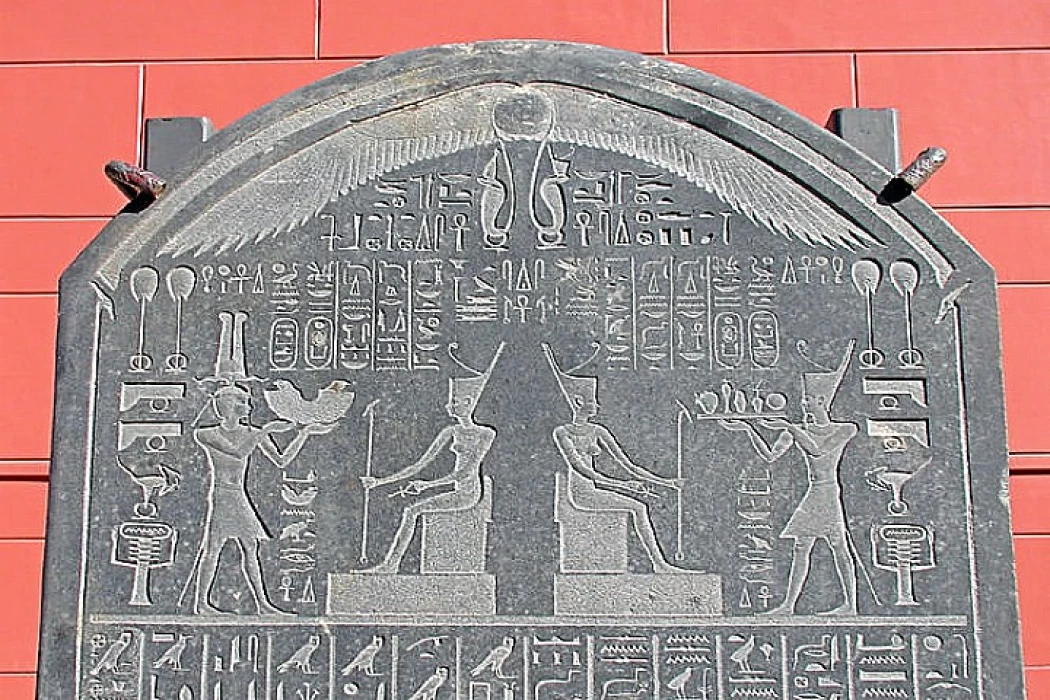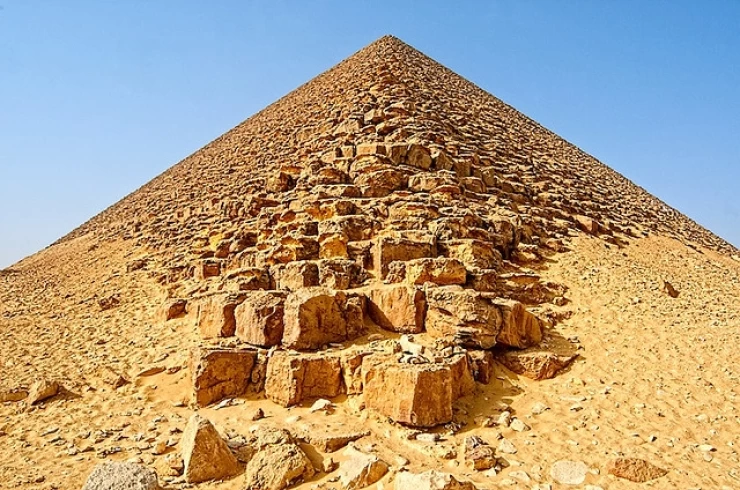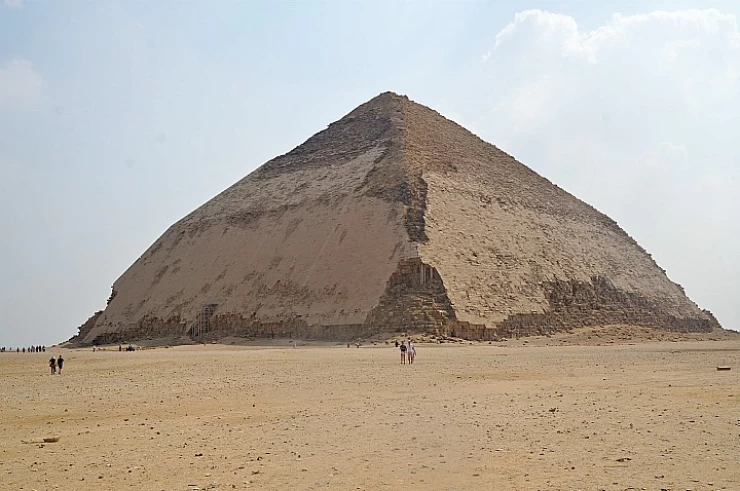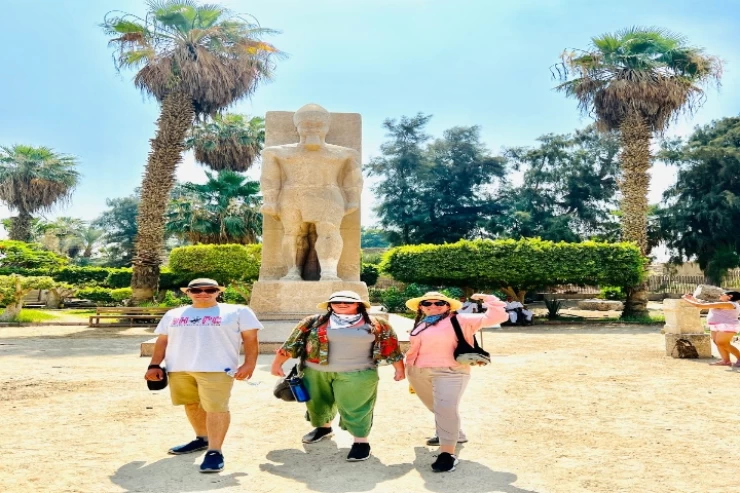
The 30th dynasty of Ancient Egypt
The Thirtieth Dynasty of Ancient Egypt
In Edfu, he is remembered as a donor of vast lands to the temple of Horus; a large stele in Ashmunein (Ermoupolis) commemorates the many buildings added to the temples of the goddess Nehmetaway, of the primordial divinity Ogdoad, and of the great Thoth himself.
Finally, from Naucratis comes a valuable inscription that recalls the imposition of a 10 percent tax on imported and processed goods in this city, the proceeds of which were intended to enrich the goddess Neith of Sais. During his reign, on the other hand, he had to face, coming out the winner,
yet another attempt to invade the Persians, in 373 BC. The following years were instead marked by the rebellion of the satraps of the various Persian provinces, and Nekhtnebef managed to protect himself by providing gold subsidies to the various contenders.
On the death of Nectanepo, in 363 BC, his son Teos, or Tachos, succeeded him as he is called by some Greek authors, a name already brought by. his father. The time seemed ripe for a direct attack on Persia. The old king Agesilaus arrived with a thousand hoplites in Egypt, where the Athenians joined him.
Nectanepo was elected pharaoh following the failure of the expedition against Phenicia organized by his predecessor Teos. Viewed from the Egyptian point of view, the reign of Nectanepo could appear almost an exact replica of that of Nekhtnebef. Both sovereigns reigned for eighteen years and carried out an enormous building activity.
In the meantime, however, the rise of Artaxerxes III Oco to the throne brought new life to the Persian empire. In 343 a. C. the great war campaign against Egypt began. Strength was the resistance of the Egyptian troops to Peluso, but the enormous power of the Persian army prevailed.
Nectanepo, panicked, instead of defending his positions, retired to Memphis willing to support a siege. The cities of the delta, however, capitulated one after the other, until the capture of Bubastis. Nectanepo, realizing that the situation was desperate, gathered together as much as he could of his possessions and left on the river "for Ethiopia", after which nothing more was known about him.
Would you like to experience a journey through ancient Egyptian culture and mythology? you can make it happen and spend a day visiting Abydos, Giza, Luxor, and Aswan to see the tombs of the pharaohs adorned with very clear, detailed, and beautifully painted scenes of the various deities of ancient Egypt, as well as many other sites, cities, adventures, and things to do in Cairo, you can try booking one of our Egypt travel packages and many private guided Cairo day trips from the airport and Egypt day trips to explore the capital of Egypt, Cairo you can check out many of the Egypt itineraries or take one of our complete Cairo day trips, such as:
Latest Articles
Admin
Aswan Governerate in Egypt
Aswan was known as ‘Sonu’ in ancient Egyptian times, meaning market, as it was a trading centre for caravans coming to and from Nubia. In the Ptolemaic era, it was called ‘Sin’ and the Nubians called it ‘Yaba Swan’. It was also known as the Land of Gold because it served as a great treasure or tomb for the kings of Nubia who lived there for thousands of years. Before the migration, Aswan's borders extended from Asna in the east to the border of Sudan in the south, and its inhabitants were Nubians, but after the Islamic conquest of Nubia, some Arab tribes settled there.
Admin
About Luxor Governorate in Egypt
The South Upper Egyptian area is home to the Egyptian governorate of Luxor. Its capital is Luxor, which was formerly Thebes, the capital of Egypt throughout multiple pharaonic eras. Its centers and cities are spread over both sides of the Nile River. The said governorate was established by Presidential Decree No. 378 of 2009, which was promulgated on the 9th of December of that year.
Admin
History of kafr El Sheikh Governorate
Kafr El Sheikh Governorate, located in the far north of Egypt in the Nile Delta, overlooking the Mediterranean Sea, is characterised by the diversity of natural life and environments, and is one of the Egyptian cities that can be visited after the end of the first semester exams at universities and schools, as it features many diverse tourist and recreational places at symbolic prices within everyone's reach.
Admin
Egypt's New Administrative Capital
The New Administrative Capital is considered the project of the era because it reflects a perfect image of the future and progress on the economic, cultural, social and civilisational level, as the capital is considered the new capital of Egypt at the present time. The importance of the New Capital is that it is a comprehensive transformation of the future of buildings, services and national and mega projects in Egypt.
Admin
Al Gharbia Governorate
The Governorate of Gharbia is inclusive in the geographical area of The Arab Republic of Egypt which is in the African continent, more specifically in the region surrounding the Nile delta, between Damietta and Rashid governance. To the control of the region from the north is Kafr El-Sheikh Governorate, from the south Menoufia Governorate, from the east – Dakahlia, Qalyubia Governorates, and to the west is the Beheira Governorate.
Admin
Hamata Islands (Qulaan Archipelago) in Marsa Alam
Each reserve has several sectors. In Wadi El Gemal Reserve, there is one of the natural areas called the Hamata area or Hamata sector in Wadi El Gemal Reserve. Its sectors are the perfect and most ecological, land and water, and host countless animals and plants found in the oceans and on the land.
















